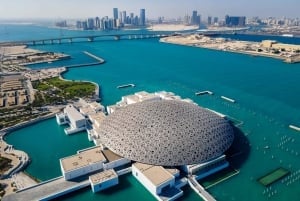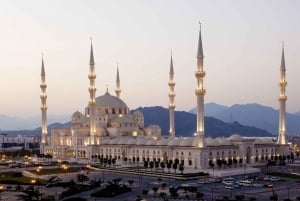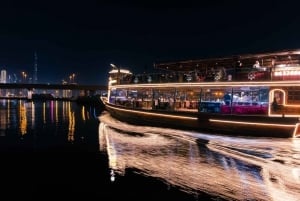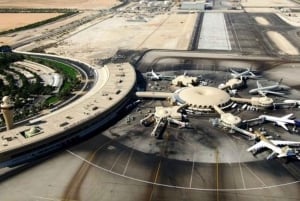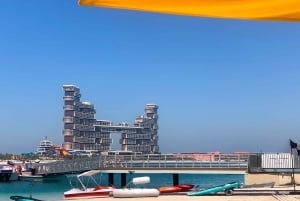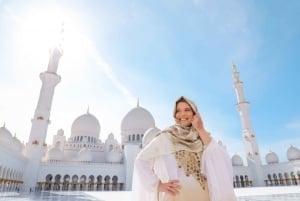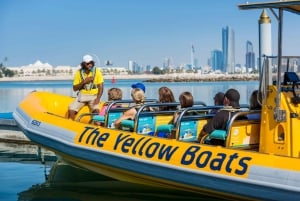A Culture Shock in Abu Dhabi
The Arabian Sand Gazelle can run to speeds of up to 60kph
Book Top Experiences and Tours in Abu Dhabi:
If youʻre booking your trip to Abu Dhabi last minute, we have you covered. Below are some of the top tours and experiences!- Abu Dhabi: Louvre Entry & Etihad Tower/Royal Palace Options
- Dubai: Sheikh Zayed Mosque, Fujairah and Khorfakkan Tour
- Dubai: Luxury Canal Dinner Cruise with Optional Transfers
- From Dubai: Abu Dhabi Grand Mosque & Louvre Museum Full-Day
- Abu Dhabi Airport Transfer to Hotel or Vice Versa
It’s the largest city in the UAE and with it brings the title of its countries capital. 50 years ago, Abu Dhabi was a mere fishing village, today it occupies a 26,000 square mile space. The discovery of oil revived the country into what is now a booming economy and, with that, it has become an attractive hotbed for international business. The city has become vastly multinational, with 80% of the population falling under the expat category.
Arguably not quite as cosmopolitan as Dubai, Abu Dhabi has followed a similar route to its noisy neighbour in being an extremely modern city. High-rise city skyscrapers and suave shopping malls populate the once barren land and in turn have attracted millionaires and superstars from all over the world. Incredible hotels like the Emirates Palace, where cash injections are endless, have been created, providing a setting for some of the world’s most famous fashion events. Look hard enough, however, and there are still some great budget hotels in Abu Dhabi.
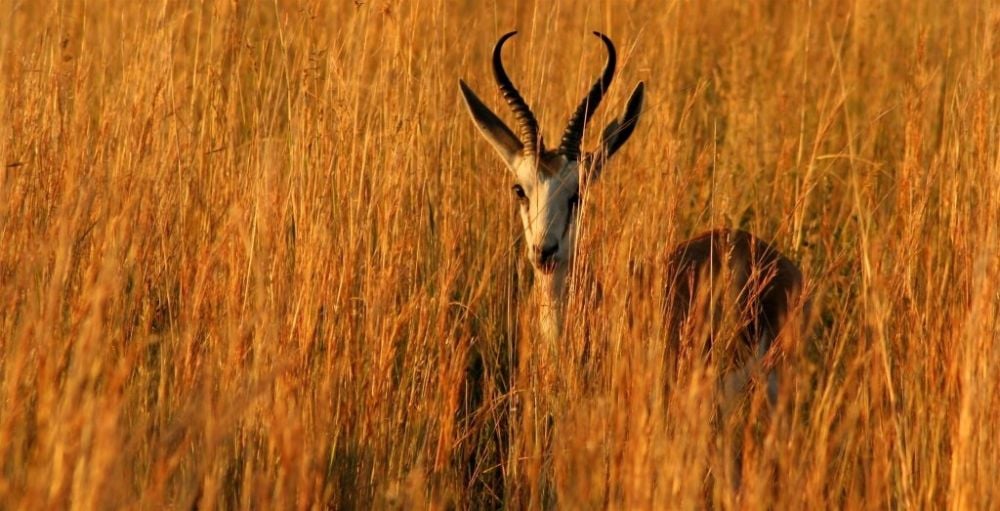
While on the outside Abu Dhabi is often thought of in its slick modern look, the ancient culture of the city has fortunately not completely vanished. Despite frequently falling second place to dazzling shopping arcades and Ferrari World, there is a whole side of Abu Dhabi’s culture that visitors can still explore.
Step just outside the city and you are on the boarders of the real life ‘Arabian Sands’. Miles upon miles of empty desert, only interrupted by the few small oases providing welcome relief from the scoring sun. Much of Abu Dhabi’s history has spawned from the desert. Through the sands lies the oasis of Al Ain, what is thought to be one of the first settlements of Abu Dhabi. Now a city in itself, visitors can explore private rooms and gardens of the Al Ain Palace - the former home of the late UAE founder Sheikh Zayed Bin Sultan Al Nahyan. The palace was restored to become a museum in 1998 and now houses a large collection of material and artifacts about the ruling family of the UAE. Once home to the ‘Father of the Nation,’ Al Ain is one of the most culturally significant palaces in the country.
A great way to see the famous deserts is by camel back. Camels have been used for transportation and trade in the area for hundreds of years. They are a creature that not only survive but thrive in the harsh conditions of the barren land. South of the city lies Liwa Oasis which is home to some of the world’s largest sand dunes, a fantastic place to take part in an organised desert camel tour.
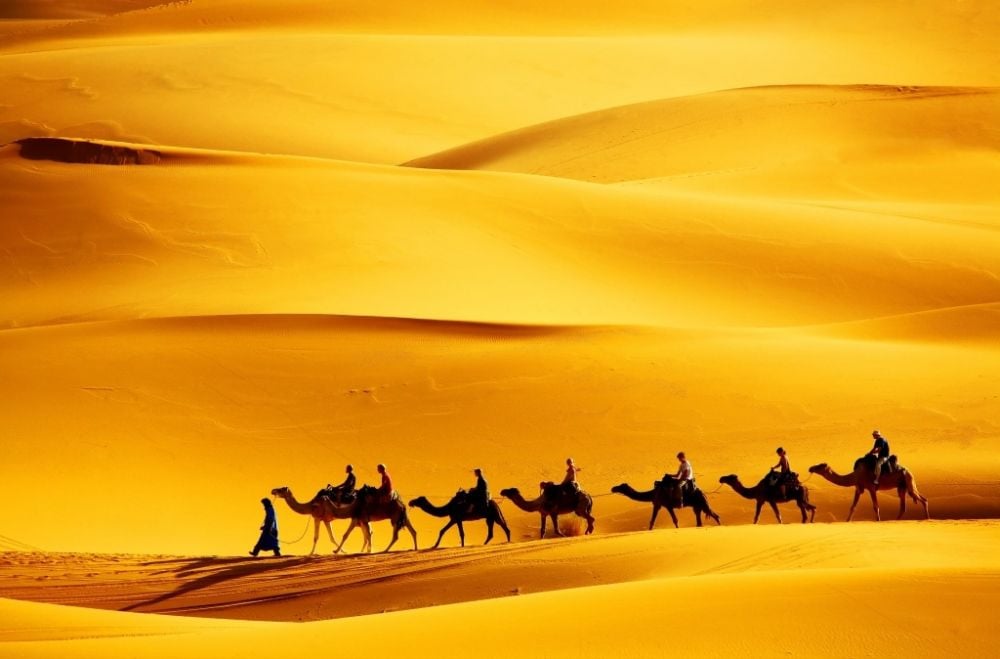
Unbeknown to many of the shopping mall tourists, Abu Dhabi has a number of small yet beautiful islands just off of its coast. Many of them contain stunning desolate beaches where crystal clear blue water lap against white sands. The famous of all is Yas Island, home to the world renowned Yas Marina F1 Grand Prix Circuit. Away from the crowded race track are some of Abu Dhabi’s islands, all of which have some great cultural significance.
Upon Sir Bain Yas Island rests one of Arabia’s largest animal parks, the Arabian Wildlife Park. Visiting the park offers a great chance to see the almost endangered Sand Gazelle. This beautiful creature can run at speeds of up to 60kph, making it one of the world’s fastest land animals. Also in the park are the Arabian Oryx, Stripped Hyena and the Arabian Rock Hyrax.
Before the discovery of oil in Abu Dhabi, one of its main exports was Pearls. Delma Island has been inhabited for over 7,000 years and was once one of the gulfs most important pearl diving centres. Believed to be one of the regions first areas of settlement, locals began diving for pearls in order to trade to travellers. Divers would hold their breath for over a minute and a half, using only their bare hands to prize away the valuable pearls hidden beneath the waves. Today the island is proud of its maritime heritage and has some great historic centres where visitors can find out more about its proud pearling background.
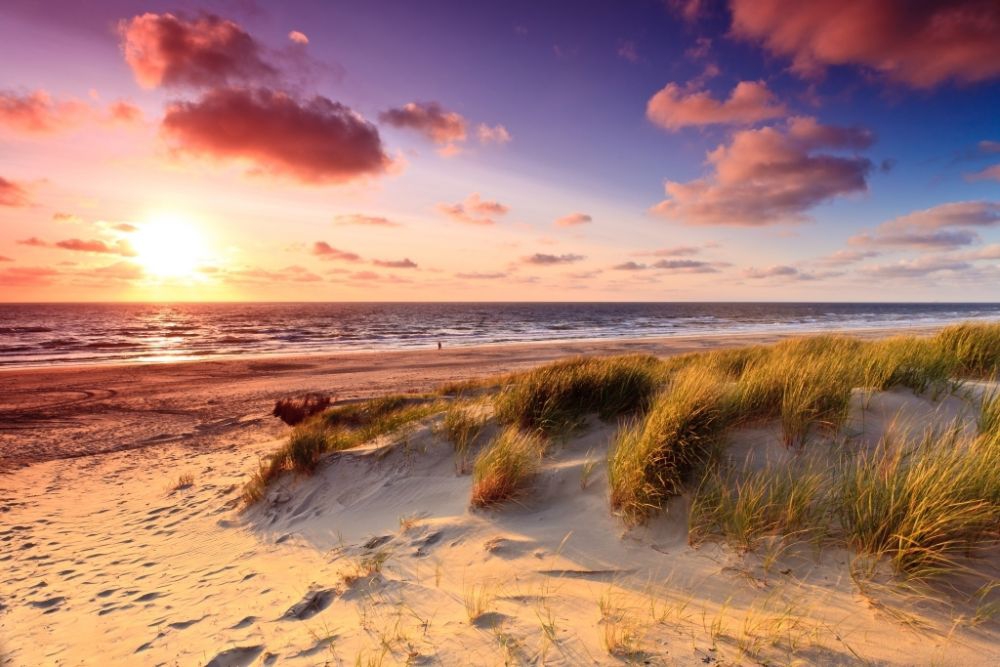
Religion and royalty are sacred within Abu Dhabi. One of the most significant mosques in the Muslim world can be found in the city: the Sheikh Zayed Mosque. Known to be one of the most important architectural treasures in UAE society, at a cost of over US$545 million it attracts 40,000 visitors each year. The building is immaculate in design, full of gold and white marble floors. The 35 tonne handmade carpet inside made from New Zealand wool took two years to make and has over two billion knots. No expense has been spared in this incredible Muslim mosque.
The UAE’s capital Abu Dhabi is so much more than what many believe it to be. With a history that stretches for thousands of years, there is so much to do in Abu Dhabi in which you can discover the culture of this great country. While the modern world will continue to engulf the city, its culture will still remain within the hearts and souls of its people, Insha'Allah.





